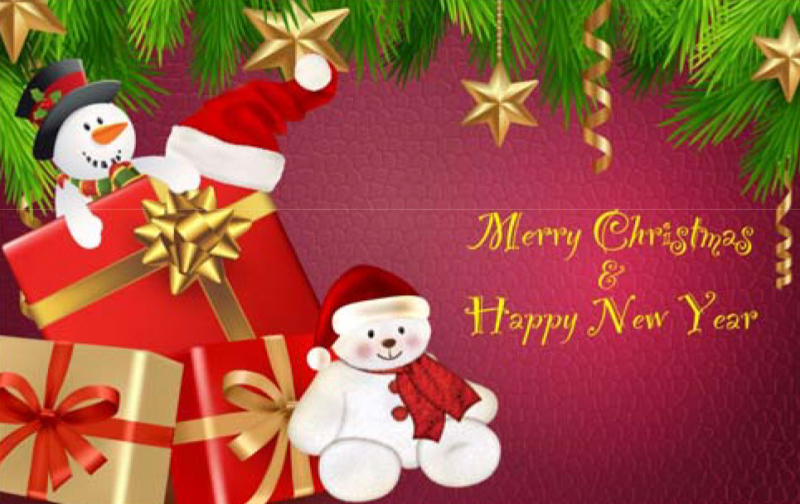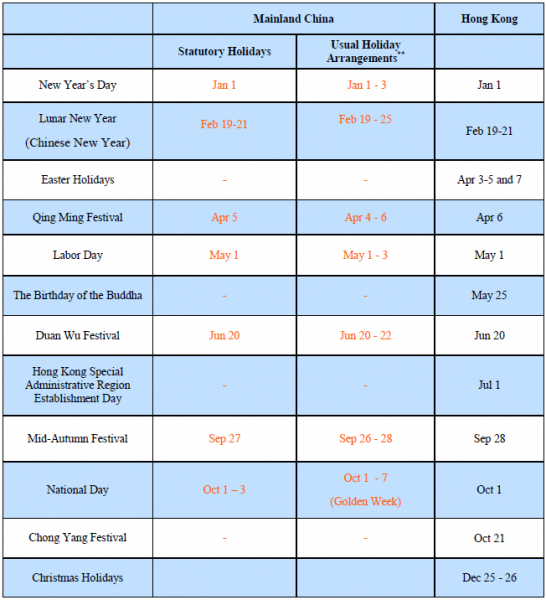China News Insights(只有英文版本)
Festivals and Public Holidays for 2015 in Mainland China and Hong Kong
Christmas and New Year are just around the corner. Modern Terminals wishes you a joyous festival holiday and a prosperous Year of 2015.
Interesting Facts about Chinese New Year
Chinese New Year is the most important festival of the year for Chinese people around the world. Also known as the Spring Festival and the Lunar New Year, the holiday period is marked by fascinating traditions and activities.
Divided into 12-year cycles, the Lunar New Years are named after the animals of the Chinese zodiac. Currently we are in the Year of the Horse, with the Year of the Goat beginning on February 19, 2015.
Within China, the lead-up to Chinese New Year sparks the largest annual mass migration of people on Earth, as workers travel the country to return to their families and home villages to celebrate(1). It is estimated that the number of passenger journeys during the Lunar New Year in 2014 was around 3.62 billion, more than two times China’s population and ten times North America’s. That accounted for about 20% of the world population(2).
The celebrations during the Lunar New Year include…
New Year Markets
During the festival, temporary markets spring up all across China. Lavishly decorated with colourful lanterns, these markets sell all manner of New Years goods – decorations, food, flowers and firecrackers(3).
Lucky Money
Distinctive red packetscontaining money – anything from one to several thousand yuan – are prepared by married couples and the elderly and presented to children in order to ensure their health and safety through the coming year. Often, this money is either saved or spent on school supplies(4).
New Red Clothes
It is believed that wearing new clothes will get the new year off to a proper start. If these clothes are red, so much the better, as red is a highly auspicious colour. To begin the new year, families dress in new red clothes to ensure their continued good fortune(5).
Fireworks /Firecrackers
For 2,000 years, firecrackers have been an important Chinese New Year custom. Less practiced in the big cities today due to noise and safety concerns, rural communities still get the new year off to a joyful and noisy start, as the fireworks explode and drive away bad spirits(5).
Auspicious Food
Food is a major part of the Spring Festival, with many dishes eaten to bring good luck and prosperity. ‘Niangao’, the name of a Glutinous New Year Cake, means ‘getting higher year after year’. Eating this cake during the festival will ensure increasing health, prosperity or good fortune(6). Round rice dumplings called ‘tangyuan’ symbolize the reunion of family(7), while lotus seeds signify a family’s prosperity through the generations and the fact that they will have many children(8).
Endnotes:
(1): Spring Festival Travel Rush in China, http://www.travelchinaguide.com/china-trains/spring-festival-rush.htm
(2): Chunyun: the Largest Annual Human Migration in the World, http://deepcor.com/news/1096/chunyun-the-largest-annual-human-migration-in-the-world
(3): Chinese New Year Traditions, http://www.chinesenewyears.info/chinese-new-year-traditions.php
(4): Customs and Practices of Spring Festival, http://www.travelchinaguide.com/essential/holidays/new-year/customs.htm
(5): Chinese New Year: Chinese New Year’s Day, http://chineseculture.about.com/od/chinesefestivals/a/Chinese-New-Year-Chinese-New-Years-Day.htm
(6): Chinese New Year Food, http://www.chinahighlights.com/travelguide/chinese-food/chinese-new-year-food.htm
(7): Chinese New Year Food, http://www.chinesenewyears.info/chinese-new-year-food.php
(8): Chinese New Year Food Symbols, http://www.flavorandfortune.com/dataaccess/article.php?ID=384

